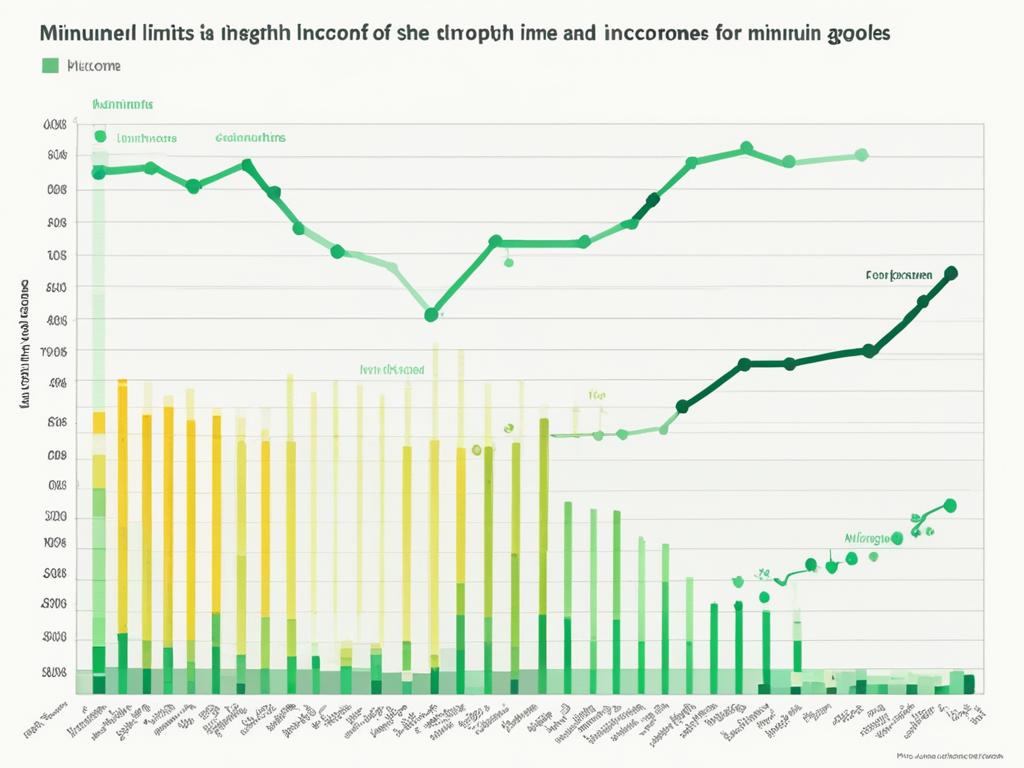Understanding Unearned Income: A Quick Guide
Unearned income, often referred to as passive income, is money received from other avenues than direct employment or running a business. It acts as a financial buffer during challenging times, such as job loss or monetary troubles, and it is especially beneficial in retirement. Leveraging unearned income can be an effective tax planning method.
It can originate from investments where no additional effort is required post-investment, such as dividends from stock market investments, rental income, interest on savings, royalties, or capital gains from the sale of investments or real estate. Taxation of such income usually adheres to different rules compared to earned income, with certain types like qualified dividends and long-term capital gains enjoying lower tax rates. It’s prudent to seek guidance from a financial advisor to optimize one’s investments and tax liabilities.
Key Takeaways
- Unearned income is a type of passive income that can provide a financial safety net during challenging times.
- Common sources of unearned income include dividends, rental income, interest, and capital gains.
- Unearned income plays an essential role in retirement income and tax planning strategy.
- Taxation of unearned income generally differs from that of earned income.
- Consulting with a financial advisor is beneficial for optimizing investments and minimizing tax liabilities associated with unearned income.
Demystifying Unearned Income
Unearned income, also known as passive income, represents a type of income you receive without active effort. This section explores the diverse income streams within this realm, how they differ from earned income, and their essential role in financial planning.
Introduction to Passive Income Streams
Passive income, or unearned income, stems from a variety of sources that don’t require your direct involvement. Some of these include returns on investments, rental property income, and royalties. Understanding the unearned income definition is key when considering the many income streams available at your disposal.
How Unearned Income Differs from Earned Income
Earned income is what you generate from working, such as wages and salaries. Unlike unearned income, this source is predictable but typically taxed at higher rates. Passive income can provide a more stable cash flow, reducing your dependence on employment alone. Additionally, the taxation rules for unearned income allow for potential tax advantages, further reinforcing its appeal.
The Role of Unearned Income in Financial Planning
Factoring unearned income into your financial planning is crucial for achieving financial security. Although initial resource allocations might carry some risks, the prospect of consistent returns over time may prove invaluable. By partnering with a knowledgeable financial advisor, you can better navigate the complexities of investment and tax nuances as they relate to various passive income streams, ensuring a more efficient financial portfolio.
What is Unearned Income
Unearned income is a type of passive income that individuals acquire independently of employment activities. This financial revenue can provide significant advantages, such as securing investment income and minimizing unearned income tax liabilities. It is essential to understand and accurately report the various sources of unearned income since they can differ significantly from earned income concerning tax liability and regulatory compliance.
Common sources of unearned income include:
- Investment income (dividends and interest earnings)
- Rental property income
- Savings account and bond interest income
- Royalties from intellectual property
- Real estate capital gains
- Inheritance and gifts

For taxation purposes, most unearned income is subjected to regular income tax rates. However, certain categories, such as qualified dividends and long-term capital gains, are eligible for reduced taxation. The following table highlights the tax treatment of various types of unearned income, along with a brief explanation of each category.
| Type of Unearned Income | Tax Treatment | Description |
|---|---|---|
| Dividends (Qualified) | Reduced Tax Rates | Payments to shareholders from company profits that meet specific IRS criteria. |
| Dividends (Non-Qualified) | Regular Income Tax Rate | Payments to shareholders from company profits that don’t meet the aforementioned criteria. |
| Rental Property Income | Regular Income Tax Rate | Income generated from rented out properties including residential and commercial real estate. |
| Interest Income | Regular Income Tax Rate | Earnings from interest on savings accounts, bonds, and other financial instruments. |
| Royalties | Regular Income Tax Rate | Income received from licensing intellectual property such as patents, copyrights, or trademarks. |
| Capital Gains | Reduced Tax Rates (for long-term gains) | Profits from the sale of investments, including stocks, bonds, and real estate. |
| Inheritance and Gifts | Varies | Income from inheriting assets or receiving sizable gifts, subject to specific tax rules and exemptions. |
To successfully navigate the complexities of unearned income tax, it’s wise to seek guidance from a tax professional or financial advisor. These experts can provide valuable support in optimizing your investment income while also ensuring regulatory compliance and effective reporting on tax forms.
Types of Unearned Income You Should Know
Understanding various types of unearned income can greatly impact your financial planning strategy. The main sources of unearned income include dividends from shareholdings, rental property income, interest income from savings accounts and bonds, and inheritances and gifts. Let’s explore these sources in more detail.
Investing in Stocks and Dividends
Dividends are an attractive form of unearned income for investors, as they represent a portion of company profits distributed to shareholders. Dividends can be paid out in cash or as additional stock, and they may be issued regularly or on an ad-hoc basis. Investing in dividend-paying stocks can provide a steady stream of passive income, as well as potential capital appreciation over time.
Rental Properties and Passive Earnings
Owning rental properties is another popular method of generating unearned income. By renting out residential or commercial properties, you can earn rental income without the need for daily hands-on management. Investing in real estate with the intention to lease it out can provide a consistent cash flow and potential property value appreciation, depending on market conditions.
Interest from Savings and Bonds: A Steady Source
Interest income from savings accounts, certificates of deposit (CDs), and bonds can also serve as a stable source of unearned income. Financial institutions and bond issuers pay interest to account holders and bondholders over a specific period, helping your money grow with minimal effort. The interest rate and payment schedule vary depending on the type of account or bond invested in.
Inheritance, Gifts, and Other Non-Work Income
Various other sources of unearned income include inheritances, gifts, pension payments, veterans affairs benefits, and lottery winnings. While the frequency and amount of these income sources can be unpredictable, they still provide financial gains outside of active employment and may carry their own tax considerations and benefits. Proper management of these funds can further strengthen your financial safety net.
Exploring these types of unearned income will allow you to diversify your income streams and build a more resilient financial future. Each source comes with its own benefits and risks, making it vital to seek professional advice to maximize your earnings and minimize your tax liabilities.
Unearned Income and Tax Implications
When it comes to taxation, unearned income enjoys specific advantages over earned income, which can impact your tax liabilities. This section will explore the unique tax treatment of unearned income and how it affects your tax return, including capital gains and qualified dividends.

Distinct Tax Treatment for Unearned Income
While earned income is subject to Social Security and Medicare taxes, unearned income is exempt from these taxes. Instead, unearned income affects your Adjusted Gross Income (AGI), which serves as the basis for determining your tax bracket. Tax rates for unearned income tend to be lower, as they are not subject to payroll taxes like earned income. Examples of unearned income include pension payments, alimony, social security benefits, welfare benefits, and unemployment benefits.
Understanding the Impact on Your Tax Return
The Internal Revenue Service (IRS) taxes most unearned income at an individual’s marginal tax rate, which may differ from their earned income tax rate. As such, it’s crucial to track and accurately report all forms of unearned income on your tax return to maintain compliance with federal tax laws. Understanding the different tax rates for unearned income can help you make more informed decisions about your investments and overall financial planning.
Navigating Capital Gains and Qualified Dividends Taxation
Some types of unearned income, such as capital gains and qualified dividends, are subject to reduced tax rates. Capital gains occur when you sell an investment or property for more than you paid for it, while qualified dividends are typically distributions from U.S. corporations and certain foreign corporations. These reduced tax rates can provide significant savings compared to the taxation of ordinary earned income. However, it’s essential to be aware of the specific requirements that apply to these types of unearned income and ensure you accurately report them on your tax return.
Maximizing Benefits of Unearned Income
Unearned income can substantially enhance financial stability by supplementing savings and providing additional stability during economic downturns. It is a reliable income source that negates the necessity for active work or involvement. This form of income also promotes income diversity, potentially shielding one’s finances from earned income volatility.

By strategically managing unearned income streams such as investments, dividends, rentals, or inheritances, individuals can significantly bolster their net worth without incurring additional labor costs, thus smartly navigating financial planning and increasing overall wealth. Factors that can maximize the benefits of unearned income include:
- Financial Security: Unearned income serves as a safety net during challenging times, offering a steady inflow of cash without the need for active labor.
- Savings Enhancement: Consistent unearned income can supplement regular savings, accelerating the process of building a robust financial foundation.
- Investment Growth: As one’s unearned income increases over time, it can be re-invested, generating compounding gains and expanding an individual’s financial portfolio.
Unearned income benefits can lead to a more secure financial future and empower individuals to pursue their long-term goals without the reliance on active work.
While unearned income offers a myriad of advantages, it is essential to consult with a financial advisor to optimize its potential within your financial planning. A skilled professional can help you navigate the complexities of investment growth, tax implications, and maximize savings through unearned income benefits, ultimately leading you towards a prosperous financial future.
Unearned Income Limits and Calculators
Understanding unearned income limits and taxes is crucial for strategic financial planning. Various tax planning tools and calculators are available to help individuals determine their unearned income tax liabilities and make well-informed investment and retirement decisions. By comprehending these income thresholds and utilizing these resources, you can ensure maximized benefits and minimized tax burdens.
Know the Thresholds for Unearned Revenue
Being aware of the income thresholds for different types of unearned income can directly impact your tax obligations. For instance, the tax rates for long-term capital gains and qualified dividends depend on your income level and tax bracket. Taxpayers in the 10% and 12% brackets usually benefit from a 0% tax rate on these gains, while those in higher tax brackets are subjected to higher rates.
Moreover, various tax deductions and credits are also affected by your unearned income thresholds. Ensuring that your unearned income falls within suitable limits can help maximize your tax advantages.

Tools to Estimate Your Unearned Income Tax
When it comes to estimating unearned income tax liabilities, several calculators and tools are at your disposal to help you navigate tax planning effectively. These resources allow you to input your specific financial data and offer accurate tax estimates based on your unearned income:
- IRS Tax Withholding Estimator: This tool provides a comprehensive assessment of your tax situation, which includes estimating both earned and unearned income taxes.
- SmartAsset’s Capital Gains Tax Calculator: It helps you determine the capital gains tax on investments like stocks, bonds, and real estate sales.
- Bankrate’s Dividend Tax Calculator: This calculator estimates the taxes on dividend income, considering factors like your filing status, income, and dividend amount.
Utilizing these tools and calculators not only enables you to evaluate your unearned income tax obligations but can also streamline tax return preparation. Remember to report unearned income on the appropriate tax form lines and consult with a financial advisor to maximize the benefits of your unearned income.
Conclusion
In summary, unearned income offers numerous advantages, such as tax benefits and supplementary income streams for retirement planning and savings. However, it necessitates meticulous management and adherence to tax regulations. Enlisting professional tax advice from experts or financial advisors is crucial for navigating the intricacies of unearned income reporting and harnessing its full potential in your personal financial blueprint.
To make well-informed financial decisions in relation to unearned income, consider the various sources of such revenue, how it can bolster traditional savings, and the positive influence it imparts on your overall financial wellbeing and future. Remember, being proactive and diligent about unearned income management can ensure you take advantage of all available unearned income credits and benefits to build a more secure and prosperous financial foundation.
Invest time in exploring and evaluating your unearned income opportunities, and consult with professionals who can guide you in creating a tailored and strategic approach. With the right financial decision-making and foresight, you can optimize unearned income to enhance your quality of life and achieve your loftiest financial aspirations.
FAQ
What is unearned income?
Unearned income, also known as passive income, is money received from sources other than direct employment or running a business. Examples include dividends, rental income, interest on savings, royalties, capital gains, and inheritances.
How does unearned income differ from earned income?
Earned income is sourced from active work and is regularly rewarded, predictable, and often taxed at higher rates than unearned income. In contrast, unearned income does not require active labor to sustain and is sourced from investments, rental properties, and royalties, among other sources.
What are some common types of unearned income?
Common types of unearned income include dividends from shareholdings, rental property proceeds, interest earnings on savings accounts and bonds, inheritances, gifts, and royalties from intellectual property.
What are the tax implications of unearned income?
Tax rates for unearned income can vary and are typically lower than earned income, as they are not subject to payroll taxes. However, unearned income does contribute to your Adjusted Gross Income (AGI) and must be accurately reported on tax forms.
How can unearned income benefit my financial planning?
Unearned income provides an additional stream of income that does not require active work, offering financial security during economic downturns or retirement. Additionally, it can diversify your income sources and reduce reliance on employment earnings.
Are there tools available to help me estimate and calculate unearned income taxes?
Yes, several unearned income calculators and tools can assist you in estimating taxes on unearned income. These resources help individuals understand potential tax implications and facilitate strategic investment and tax planning decisions.

